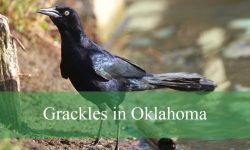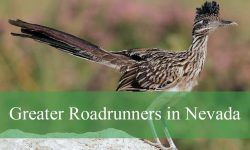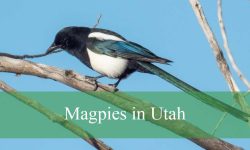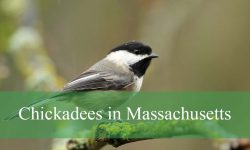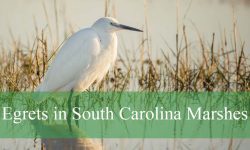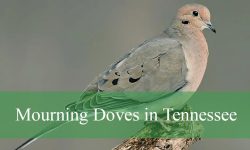In yards, streets, and open spaces throughout California, the house finch has become a constant splash of movement and song. Their cheerful songs drift through suburban neighborhoods and their bright plumage brings color to city landscapes. Many Californians see them perched on power lines or visiting backyard feeders without considering the complexity of their behaviors and ecological roles.
California offers an environment where house finches thrive year round. From coastal valleys to inland foothills and residential gardens, these adaptable birds have woven themselves deeply into the state’s natural rhythms. Their resilience, intelligence, and social nature make them one of the most successful species in the region.
This article uncovers the truth about house finches in California that most people never notice. Their secret behaviors, breeding strategies, social interactions, and ecological influence reveal a bird far more remarkable than its everyday appearance suggests.
Understanding House Finches in California
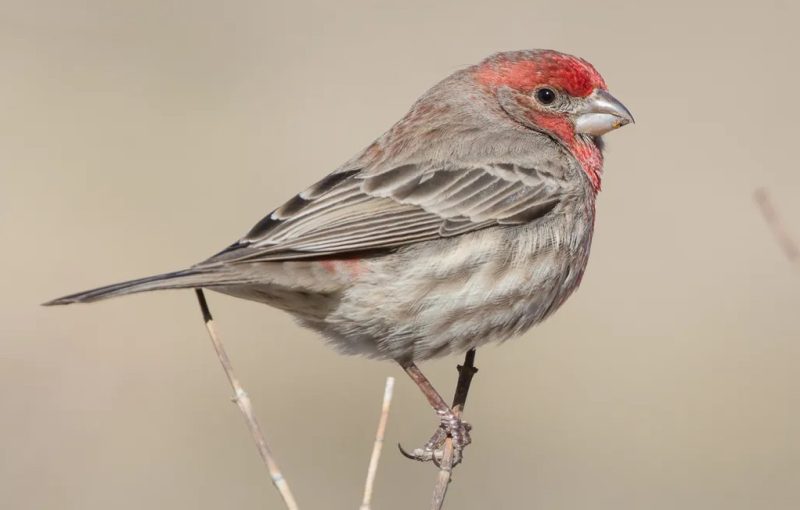
What House Finches Really Are
House finches, scientifically known as Haemorhous mexicanus, are small, energetic songbirds with rounded bodies, conical beaks, and distinctive chirping voices. Males often show red or orange coloration on the head and chest while females display more subtle brown streaks.
Their bill shape identifies them as seed specialists. Their song repertoire and social tendencies make them highly expressive and vocal birds. Their adaptability enables them to flourish in a wide range of California habitats.
The California Connection
House finches are originally native to the western United States including California. This is their ancestral range. Fertile valleys, chaparral landscapes, and coastal vegetation all supported finch populations long before urban development transformed the state.
Even as cities expanded the species adapted quickly. They fit easily into suburban environments where ornamental plants, fruiting shrubs, and feeders provide abundant resources.
Where They Live in California
House finches thrive in suburbs, parks, agricultural fields, foothills, vineyards, desert edges, and city centers. They perch on telephone wires, rooftops, bushes, eucalyptus branches, pepper trees, and garden fences.
They rarely hide. Their bold presence makes them one of the most visible birds in the state.
Hidden Behaviors Few People Notice
Their Social Intelligence
House finches display complex social behaviors. They recognize flock members. They observe dominant individuals and adjust their feeding or perching positions accordingly. Their communication involves chirps, trills, and subtle calls that maintain flock cohesion.
Their Curiosity Makes Them Successful
Finches explore new environments quickly. They test unfamiliar seeds, examine openings in buildings, and inspect new feeders. This curiosity gives them an advantage in human landscapes.
Their Subtle Body Language
Finches use small movements to signal intentions. Males may puff their feathers to assert spacing. Females tilt their heads when assessing surroundings. Their subtlety often goes unnoticed by casual observers.
The Anatomy That Supports Their Lifestyle
Strong Conical Beaks
Their beaks are adapted for cracking seeds efficiently. The internal structure allows precise pressure for breaking husks. They also use their beaks to manipulate fruit and soft plant matter.
Lightweight Feathers
House finches have soft plumage that insulates well in mild California winters. Males develop brighter feathers during breeding seasons due to pigments obtained from food.
Agile Feet and Wings
Finches maneuver easily through branches and wire fences. Their wings support short rapid flights between shrubs and feeders.
Feeding Habits Across California
A Seed Based Diet
Seeds form the core of a finch’s diet. They consume sunflower seeds, millet, thistle, grass seeds, dandelion seeds, and seeds from native plants.
California’s abundance of ornamental vegetation provides continuous access to fruiting shrubs and seed producing plants.
Seasonal Foraging
In spring finches add buds, blossoms, and fresh plant growth to their diets. Summer offers berries and soft fruits. Fall provides abundant seeds from dried grasses and garden plants.
Winter diets rely heavily on evergreen shrubs, bird feeders, and seeds from winter hardy plants.
Feeder Behavior
At feeders they exhibit social hierarchies. Some individuals dominate preferred perches. Others wait patiently. Finches visit feeders throughout the day but peak activity often occurs in morning hours.
House Finches and Color Variation
Why Males Are Red
Red coloration comes from carotenoid pigments in food. Berries, fruits, and certain flower seeds provide these pigments. Healthier males display deeper colors which influence female mate choice.
Color Variation Across California
Males may appear red, orange, or yellow. Coloration depends on diet quality and availability. Coastal birds sometimes show brighter plumage due to varied plant pigments.
Breeding and Nesting Behavior
Choosing Nesting Sites
House finches are flexible nesters. They choose trees, shrubs, vines, porch beams, hanging baskets, outdoor wreaths, building ledges, and even traffic lights.
Their adaptability allows them to nest successfully in both natural and urban environments.
Nest Construction
Females build the nest using grasses, fibers, twigs, hair, rootlets, and soft plant material. The cup shape cradles eggs securely.
Males accompany females and provide some materials but females perform most of the construction.
Egg Laying and Raising Young
Females lay three to six pale blue eggs. Incubation lasts about two weeks. Both parents feed the chicks. Young finches fledge three weeks after hatching but continue to follow parents and learn feeding skills.
Multiple Broods
California’s long warm seasons allow two to four broods per year. This reproductive success helps maintain large finch populations.
House Finch Songs and Vocal Communication
The Male’s Warbling Song
Male house finches perform long warbling songs with rising and falling notes. Songs serve to defend territory and attract mates. Each male develops unique variations.
Female Vocalizations
Females produce soft calls during feeding and nesting. They also communicate with mates throughout the breeding season.
Contact Calls
Flocks use short contact calls to stay connected while moving across vegetation. These calls help maintain group cohesion.
Social Structure of Flocks
Loose Social Groups
Finches form flocks that shift in size and composition. Individuals join and leave groups fluidly. These flocks move through neighborhoods in search of seeds and water.
Dominance Patterns
Some finches show dominance at feeding sites. Dominance influences perch choice, feeding order, and flock movement.
Non Aggressive Nature
Despite competition over food, finches display minimal aggression. They rely on avoidance more than direct conflict.
House Finches in California Ecosystems
Seed Distribution
Finches disperse seeds across landscapes. Some seeds pass through digestion. Others drop while finches feed. This contributes to plant regeneration.
Pollination Assistance
While feeding on flowers, finches sometimes assist in pollination. They may transfer pollen between blossoms unintentionally.
Maintaining Ecological Balance
Finches help regulate seed producing weeds. They also serve as prey for hawks and other predators which supports healthy ecological networks.
Finches Across California’s Diverse Regions
Coastal Areas
Coastal finches exploit fruiting shrubs and native vegetation. Mild winters support year round activity.
Inland Valleys
Agricultural regions supply grains and seeds. Orchards and vineyards add extra feeding opportunities.
Desert Edges
Finches adapt to dry conditions by visiting irrigated gardens, cactus blooms, and native shrubs.
Mountain Foothills
Pine forests and manzanita thickets support finch populations during warmer months.
Seasonal Rhythms in Finch Life
Spring
Breeding season begins. Males sing frequently. Females build nests. Flocks become less cohesive as pairs form.
Summer
Young birds fledge. Families roam suburban gardens and ripening fields. Fruit becomes abundant.
Fall
Finches gather in larger flocks to feed on late season seeds. Juveniles learn to navigate feeders and natural habitats.
Winter
Winter flocks dominate. Seeds and feeders become vital food sources. Songs diminish but calls remain active.
Interactions With Other Wildlife
With Sparrows
Finches share feeding areas with sparrows. They coexist easily by taking different perches.
With Hummingbirds
Finches occasionally feed on flower buds but do not compete directly with hummingbirds for nectar.
With Hawks
Cooper’s hawks and sharp shinned hawks sometimes hunt finches. Their presence influences flock movement and alertness.
With Doves
Doves and finches often forage on the same ground areas. Finches stay vigilant and move frequently between branches.
Myths and Misconceptions About House Finches
Myth: House Finches Only Eat Seeds
They also eat buds, fruits, blossoms, and some insects.
Myth: All Male Finches Are Bright Red
Color intensity depends on diet and varies widely.
Myth: House Finches Migrate Long Distances
Most remain in the same region year round.
Myth: Finches Only Live in Forests
They thrive in urban, agricultural, and suburban landscapes.
Conservation and Long Term Prospects
Stable Populations
House finches remain abundant in California. Their adaptability protects them from environmental changes.
Importance of Urban Habitats
City parks, gardens, and residential neighborhoods play key roles in supporting finch populations.
Climate Influence
Longer warm seasons extend breeding opportunities which may increase finch numbers.
Daily Life of House Finches in California
Morning Activity
At sunrise finches begin feeding. Males sing from exposed perches. Flocks gather near feeders or shrubs.
Midday
Finches rest in shaded branches. They preen feathers and feed intermittently.
Afternoon
Flocks become active again moving through neighborhoods in search of seeds and water.
Evening
Chirps soften as finches settle into roosting spots. Pairs or small groups roost in sheltered tree branches.
FAQs About House Finches in California
Are house finches common in California
Yes. They are one of the state’s most abundant songbirds.
What do they eat
Seeds, buds, fruits, berries, and occasional insects.
Do they migrate
Most remain within the same region. Some move locally between elevations.
Why are some males yellow
Dietary pigments create variation in color.
Will they use nest boxes
They prefer natural or open cup sites instead of typical nest box designs.
Do house finches mate for life
Pairs may stay together for multiple seasons but bonds can change.
How long do they live
Most live two to five years in the wild.
Conclusion
House finches in California are more than colorful visitors to backyards. They are intelligent, adaptable birds with complex behaviors and deep ecological importance. Their songs brighten spring mornings. Their flocks animate winter gardens. Their nesting and feeding habits connect them to nearly every corner of the state.
Understanding the truth about house finches reveals the hidden world behind their familiar presence. Whether perched on a telephone wire or exploring a blooming shrub, these birds enrich California’s natural landscapes with personality and life.

